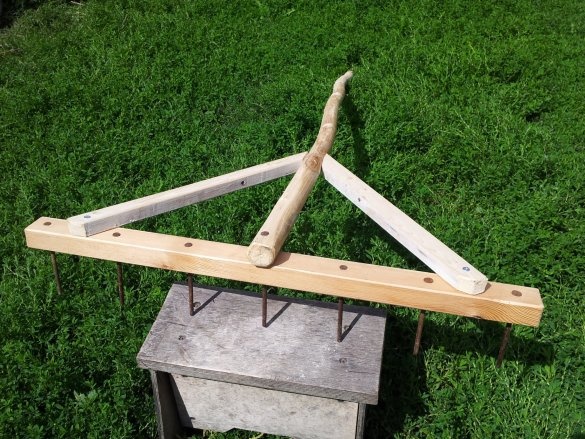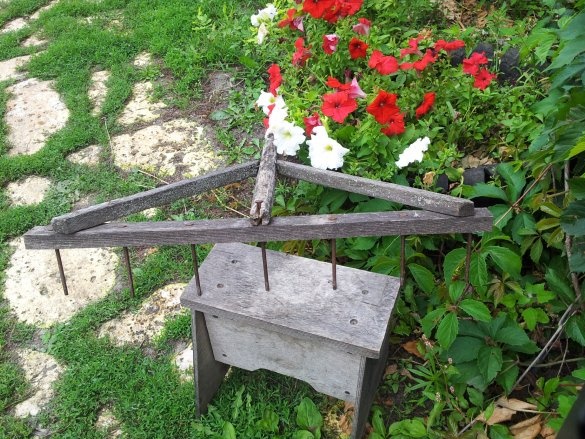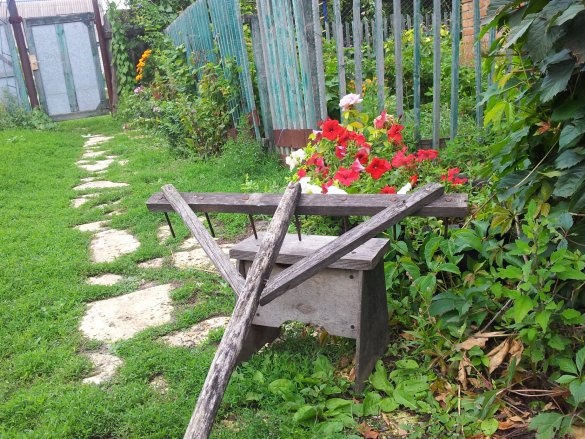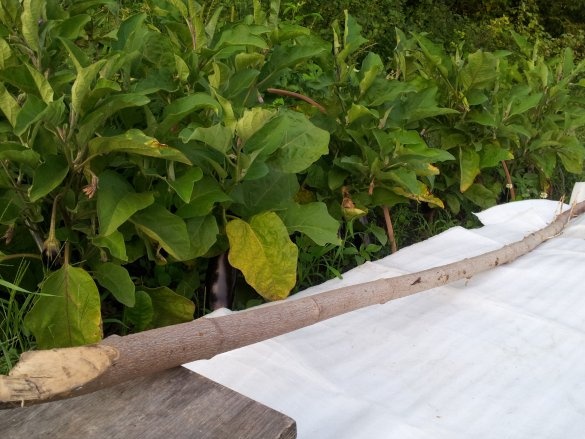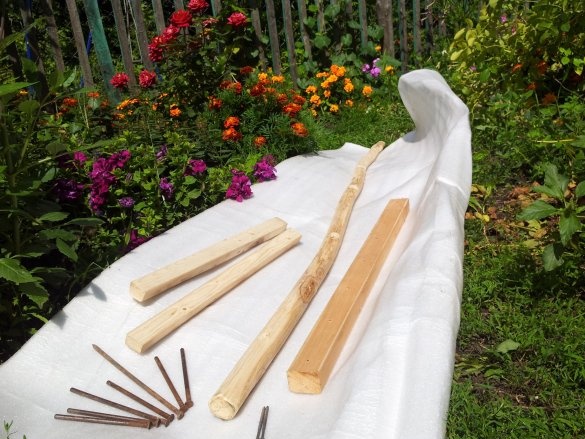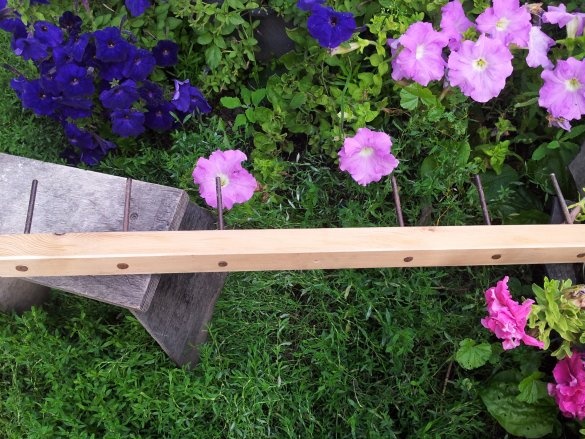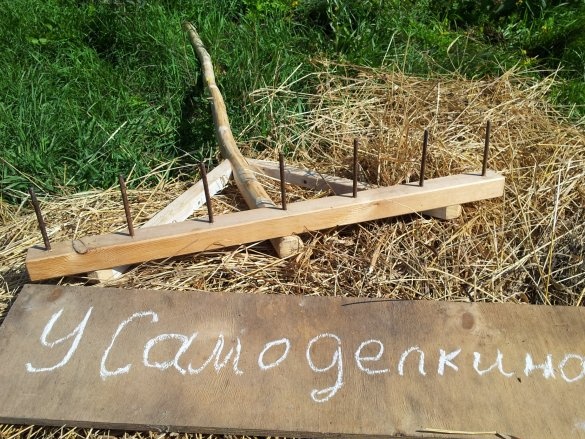I want to share my personal, many years of experience. Our family has been living in the village for over 25 years. For more than 10 years we had a cow, which we needed to feed with hay in the winter, so I am familiar with the harvesting of hay. Rakes play an important role in this matter. They were supposed to be light, strong, comfortable, well-absorbing hay.
At first, we had a makeshift rake, then there were no others, with wooden teeth. They did a good job, but quite often failed. The teeth quickly broke, which immediately complicated the process of harvesting the finished hay. Then I decided to use 200 mm nails instead of wooden teeth. In addition, I experimentally became convinced that American maple can be successfully used as a rake handle.
It turned out that such pens have high working properties. Cut off at the beginning of spring and well-dried, they are light and quite durable. It’s good that we have a lot of this maple, so shovel and rake cuttings are not translated.
The first two photos show the remainder of a similar rake that worked for more than ten years and only at the beginning of the summer of this year the handle broke.
Then a photo, cut off on February 26 of this year, a branch of the American maple, which dried well. Usually for such cases I choose branches evenly, of the desired length, and thickness, which is very easy to do with us. Next, I sand and level the surface of the future rake handle
In the fourth photo, a complete set of parts for making rakes. After processing, the pen turned out to be 160 cm long, a little crooked, but I'm sure it will suit me. I took the teeth from a broken rake, their ends are rounded off with a file. Six pieces are 120 mm long, and the central one is longer than 154 mm, since it also passes through the handle body and the comb rail. Dimensions have long been verified in business.
In the following photo, a partially assembled “comb”. In order for the nails to stay firmly in place, I, in the right places, drilled holes a little smaller than the nails themselves in diameter. If the diameter of 200 mm nails is 6 mm, then I drilled 5.6 mm with a drill. Pine comb rail with a length of 68 cm and a profile of 30 by 20 mm. Drilling step 105mm. Two rails providing a rake rigidity, also pine 44 cm long and a profile of 30 by 20 mm. To make the rake comfortable in use, because of the curvature of the handle, you have to make test connections of the “comb” in different places on the thick end of the handle, and watch how the “comb” rail is located.The right place, then, when holding a handle with a staff in hands without effort, the staff itself is installed horizontally.
After that, a hole of 5.6 mm is drilled in the selected place and the central nail is hammered, which connects the handle and the comb rail. It remains to connect the stiffeners with screws and the rake is ready. The dignity of such a rake. Light, strong, hay does not cling to teeth, long service life.
Work rake demonstration
Sincerely, Nikolay Voydetsky.


